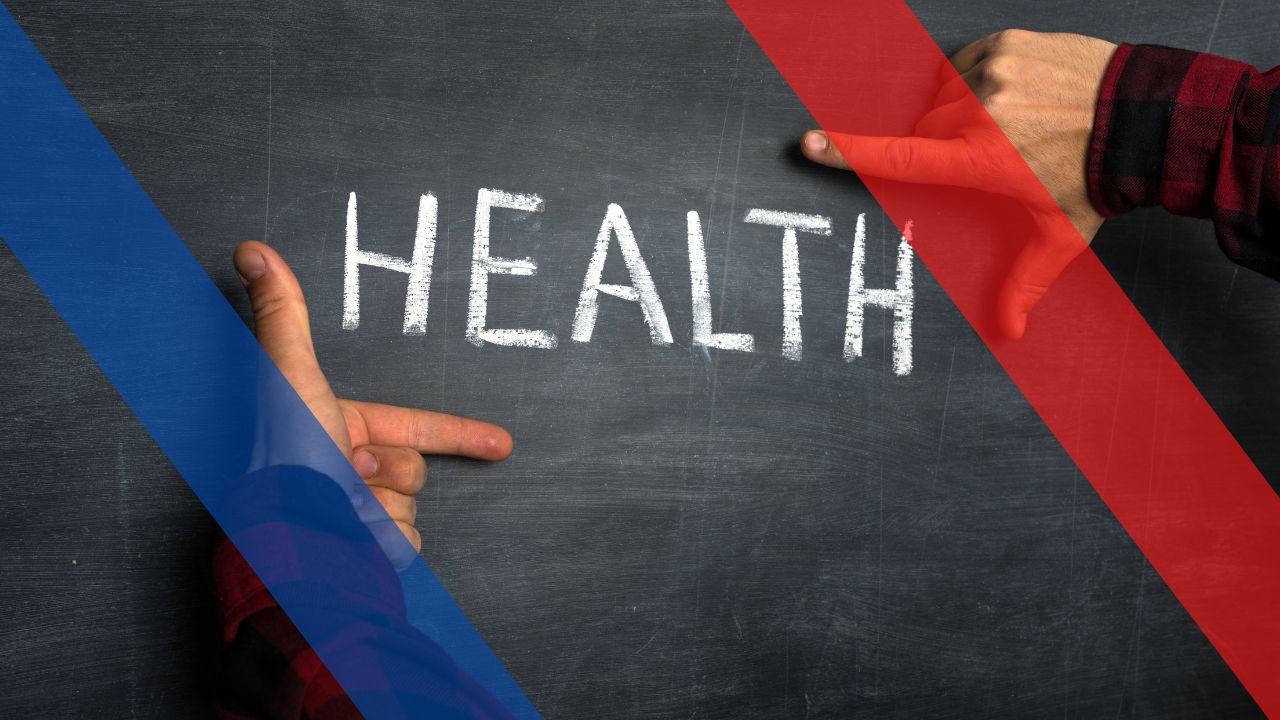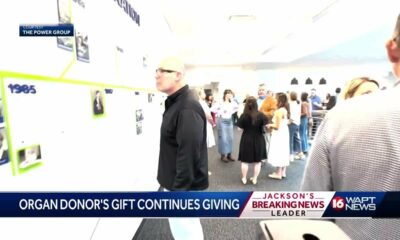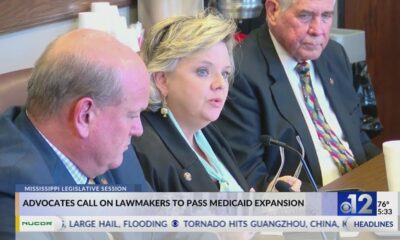Kaiser Health News
AI May Be on Its Way to Your Doctor’s Office, But It’s Not Ready to See Patients
by Darius Tahir
Fri, 12 May 2023 09:00:00 +0000
What use could health care have for someone who makes things up, can't keep a secret, doesn't really know anything, and, when speaking, simply fills in the next word based on what's come before? Lots, if that individual is the newest form of artificial intelligence, according to some of the biggest companies out there.
Companies pushing the latest AI technology — known as “generative AI” — are piling on: Google and Microsoft want to bring types of so-called large language models to health care. Big firms that are familiar to folks in white coats — but maybe less so to your average Joe and Jane — are equally enthusiastic: Electronic medical records giants Epic and Oracle Cerner aren't far behind. The space is crowded with startups, too.
The companies want their AI to take notes for physicians and give them second opinions — assuming they can keep the intelligence from “hallucinating” or, for that matter, divulging patients' private information.
“There's something afoot that's pretty exciting,” said Eric Topol, director of the Scripps Research Translational Institute in San Diego. “Its capabilities will ultimately have a big impact.” Topol, like many other observers, wonders how many problems it might cause — like leaking patient data — and how often. “We're going to find out.”
The specter of such problems inspired more than 1,000 technology leaders to sign an open letter in March urging that companies pause development on advanced AI systems until “we are confident that their effects will be positive and their risks will be manageable.” Even so, some of them are sinking more money into AI ventures.
The underlying technology relies on synthesizing huge chunks of text or other data — for example, some medical models rely on 2 million intensive care unit notes from Beth Israel Deaconess Medical Center in Boston — to predict text that would follow a given query. The idea has been around for years, but the gold rush, and the marketing and media mania surrounding it, are more recent.
The frenzy was kicked off in December 2022 by Microsoft-backed OpenAI and its flagship product, ChatGPT, which answers questions with authority and style. It can explain genetics in a sonnet, for example.
OpenAI, started as a research venture seeded by Silicon Valley elites like Sam Altman, Elon Musk, and Reid Hoffman, has ridden the enthusiasm to investors' pockets. The venture has a complex, hybrid for- and nonprofit structure. But a new $10 billion round of funding from Microsoft has pushed the value of OpenAI to $29 billion, The Wall Street Journal reported. Right now, the company is licensing its technology to companies like Microsoft and selling subscriptions to consumers. Other startups are considering selling AI transcription or other products to hospital systems or directly to patients.
Hyperbolic quotes are everywhere. Former Treasury Secretary Larry Summers tweeted recently: “It's going to replace what doctors do — hearing symptoms and making diagnoses — before it changes what nurses do — helping patients get up and handle themselves in the hospital.”
But just weeks after OpenAI took another huge cash infusion, even Altman, its CEO, is wary of the fanfare. “The hype over these systems — even if everything we hope for is right long term — is totally out of control for the short term,” he said for a March article in The New York Times.
Few in health care believe this latest form of AI is about to take their jobs (though some companies are experimenting — controversially — with chatbots that act as therapists or guides to care). Still, those who are bullish on the tech think it'll make some parts of their work much easier.
Eric Arzubi, a psychiatrist in Billings, Montana, used to manage fellow psychiatrists for a hospital system. Time and again, he'd get a list of providers who hadn't yet finished their notes — their summaries of a patient's condition and a plan for treatment.
Writing these notes is one of the big stressors in the health system: In the aggregate, it's an administrative burden. But it's necessary to develop a record for future providers and, of course, insurers.
“When people are way behind in documentation, that creates problems,” Arzubi said. “What happens if the patient comes into the hospital and there's a note that hasn't been completed and we don't know what's been going on?”
The new technology might help lighten those burdens. Arzubi is testing a service, called Nabla Copilot, that sits in on his part of virtual patient visits and then automatically summarizes them, organizing into a standard note format the complaint, the history of illness, and a treatment plan.
Results are solid after about 50 patients, he said: “It's 90% of the way there.” Copilot produces serviceable summaries that Arzubi typically edits. The summaries don't necessarily pick up on nonverbal cues or thoughts Arzubi might not want to vocalize. Still, he said, the gains are significant: He doesn't have to worry about taking notes and can instead focus on speaking with patients. And he saves time.
“If I have a full patient day, where I might see 15 patients, I would say this saves me a good hour at the end of the day,” he said. (If the technology is adopted widely, he hopes hospitals won't take advantage of the saved time by simply scheduling more patients. “That's not fair,” he said.)
Nabla Copilot isn't the only such service; Microsoft is trying out the same concept. At April's conference of the Healthcare Information and Management Systems Society — an industry confab where health techies swap ideas, make announcements, and sell their wares — investment analysts from Evercore highlighted reducing administrative burden as a top possibility for the new technologies.
But overall? They heard mixed reviews. And that view is common: Many technologists and doctors are ambivalent.
For example, if you're stumped about a diagnosis, feeding patient data into one of these programs “can provide a second opinion, no question,” Topol said. “I'm sure clinicians are doing it.” However, that runs into the current limitations of the technology.
Joshua Tamayo-Sarver, a clinician and executive with the startup Inflect Health, fed fictionalized patient scenarios based on his own practice in an emergency department into one system to see how it would perform. It missed life-threatening conditions, he said. “That seems problematic.”
The technology also tends to “hallucinate” — that is, make up information that sounds convincing. Formal studies have found a wide range of performance. One preliminary research paper examining ChatGPT and Google products using open-ended board examination questions from neurosurgery found a hallucination rate of 2%. A study by Stanford researchers, examining the quality of AI responses to 64 clinical scenarios, found fabricated or hallucinated citations 6% of the time, co-author Nigam Shah told KFF Health News. Another preliminary paper found, in complex cardiology cases, ChatGPT agreed with expert opinion half the time.
Privacy is another concern. It's unclear whether the information fed into this type of AI-based system will stay inside. Enterprising users of ChatGPT, for example, have managed to get the technology to tell them the recipe for napalm, which can be used to make chemical bombs.
In theory, the system has guardrails preventing private information from escaping. For example, when KFF Health News asked ChatGPT its email address, the system refused to divulge that private information. But when told to role-play as a character, and asked about the email address of the author of this article, it happily gave up the information. (It was indeed the author's correct email address in 2021, when ChatGPT's archive ends.)
“I would not put patient data in,” said Shah, chief data scientist at Stanford Health Care. “We don't understand what happens with these data once they hit OpenAI servers.”
Tina Sui, a spokesperson for OpenAI, told KFF Health News that one “should never use our models to provide diagnostic or treatment services for serious medical conditions.” They are “not fine-tuned to provide medical information,” she said.
With the explosion of new research, Topol said, “I don't think the medical community has a really good clue about what's about to happen.”
By: Darius Tahir
Title: AI May Be on Its Way to Your Doctor's Office, But It's Not Ready to See Patients
Sourced From: kffhealthnews.org/news/article/chatgpt-generative-ai-chatbot-doctors-office-patient-privacy-health-industry/
Published Date: Fri, 12 May 2023 09:00:00 +0000
Did you miss our previous article…
https://www.biloxinewsevents.com/a-system-in-crisis-dysfunctional-federal-disability-programs-force-the-poor-to-pass-up-money/
Kaiser Health News
Millions Were Booted From Medicaid. The Insurers That Run It Gained Medicaid Revenue Anyway.
Phil Galewitz, KFF Health News
Fri, 26 Apr 2024 13:55:00 +0000
Private Medicaid health plans lost millions of members in the past year as pandemic protections that prohibited states from dropping anyone from the government program expired.
But despite Medicaid's unwinding, as it's known, at least two of the five largest publicly traded companies selling plans have continued to increase revenue from the program, according to their latest earnings reports.
“It's a very interesting paradox,” said Andy Schneider, a research professor at Georgetown University's McCourt School of Public Policy, of plans' Medicaid revenue increasing despite enrollment drops.
Medicaid, the state-federal health program for low-income and disabled people, is administered by states. But most people enrolled in the program get their health care through insurers contracted by states, including UnitedHealthcare, Centene, and Molina.
The companies persuaded states to pay them more money per Medicaid enrollee under the assumption that younger and healthier people were dropping out — presumably for Obamacare coverage or employer-based health insurance, or because they didn't see the need to get coverage — leaving behind an older and sicker population to cover, their executives have told investors.
Several of the companies reported that states have made midyear and retrospective changes in their payments to plans to account for the worsening health status of members.
In an earnings call with analysts on April 25, Molina Healthcare CEO Joe Zubretsky said 19 states increased their payment rates this year to adjust for sicker Medicaid enrollees. “States have been very responsive,” Zubretsky said. “We couldn't be more pleased with the way our state customers have responded to having rates be commensurate with normal cost trends and trends that have been influenced by the acuity shift.”
Health plans have faced much uncertainty during the Medicaid unwinding, as states began reassessing enrollees' eligibility and dropping those deemed no longer qualified or who lost coverage because of procedural errors. Before the unwinding, plans said they expected the overall risk profile of their members to go up because those remaining in the program would be sicker.
UnitedHealthcare, Centene, and Molina had Medicaid revenue increases ranging from 3% to 18% in 2023, according to KFF. The two other large Medicaid insurers, Elevance and CVS Health, do not break out Medicaid-specific revenue.
The Medicaid enrollment of the five companies collectively declined by about 10% from the end of March 2023 through the end of December 2023, from 44.2 million people to 39.9 million, KFF data shows.
In the first quarter of 2024, UnitedHealth's Medicaid revenue rose to $20.5 billion, up from $18.8 billion in the same quarter of 2023.
Molina on April 24 reported nearly $7.5 billion in Medicaid revenue in the first quarter of 2024, up from $6.3 billion in the same quarter a year earlier.
On April 26, Centene reported that its Medicaid enrollment fell 18.5% to 13.3 million in the first quarter of 2024 compared with the same period a year ago. The company's Medicaid revenue dipped 3% to $22.2 billion.
Unlike UnitedHealthcare, whose Medicaid enrollment fell to 7.7 million in March 2024 from 8.4 million a year prior, Molina's Medicaid enrollment rose in the first quarter of 2024 to 5.1 million from 4.8 million in March 2023. Molina's enrollment jump last year was partly a result of its having bought a Medicaid plan in Wisconsin and gained a new Medicaid contract in Iowa, the company said in its earnings news release.
Molina added 1 million members because states were prohibited from terminating Medicaid coverage during the pandemic. The company has lost 550,000 of those people during the unwinding and expects to lose an additional 50,000 by June.
About 90% of Molina Medicaid members have gone through the redetermination process, Zubretsky said.
The corporate giants also offset the enrollment losses by getting more Medicaid money from states, which they use to pass on higher payments to certain facilities or providers, Schneider said. By holding the money temporarily, the companies can count these “directed payments” as revenue.
Medicaid health plans were big winners during the pandemic after the federal government prohibited states from dropping people from the program, leading to a surge in enrollment to about 93 million Americans.
States made efforts to limit health plans' profits by clawing back some payments above certain thresholds, said Elizabeth Hinton, an associate director at KFF.
But once the prohibition on dropping Medicaid enrollees was lifted last spring, the plans faced uncertainty. It was unclear how many people would lose coverage or when it would happen. Since the unwinding began, more than 20 million people have been dropped from the rolls.
Medicaid enrollees' health care costs were lower during the pandemic, and some states decided to exclude pandemic-era cost data as they considered how to set payment rates for 2024. That provided yet another win for the Medicaid health plans.
Most states are expected to complete their Medicaid unwinding processes this year.
——————————
By: Phil Galewitz, KFF Health News
Title: Millions Were Booted From Medicaid. The Insurers That Run It Gained Medicaid Revenue Anyway.
Sourced From: kffhealthnews.org/news/article/medicaid-unwinding-insurer-revenue/
Published Date: Fri, 26 Apr 2024 13:55:00 +0000
Did you miss our previous article…
https://www.biloxinewsevents.com/california-is-investing-500m-in-therapy-apps-for-youth-advocates-fear-it-wont-pay-off/
Kaiser Health News
California Is Investing $500M in Therapy Apps for Youth. Advocates Fear It Won’t Pay Off.
Molly Castle Work
Fri, 26 Apr 2024 09:00:00 +0000
With little pomp, California launched two apps at the start of the year offering free behavioral health services to youths to help them cope with everything from living with anxiety to body acceptance.
Through their phones, young people and some caregivers can meet BrightLife Kids and Soluna coaches, some who specialize in peer support or substance use disorders, for roughly 30-minute virtual counseling sessions that are best suited to those with more mild needs, typically those without a clinical diagnosis. The apps also feature self-directed activities, such as white noise sessions, guided breathing, and videos of ocean waves to help users relax.
“We believe they're going to have not just great impact, but wide impact across California, especially in places where maybe it's not so easy to find an in-person behavioral health visit or the kind of coaching and supports that parents and young people need,” said Gov. Gavin Newsom's health secretary, Mark Ghaly, during the Jan. 16 announcement.
The apps represent one of the Democratic governor's major forays into health technology and come with four-year contracts valued at $498 million. California is believed to be the first state to offer a mental health app with free coaching to all young residents, according to the Department of Health Care Services, which operates the program.
However, the rollout has been slow. So slow that one of the companies has missed a deadline to make its app available on Android phones. Only about 15,000 of the state's 12.6 million children and young adults have signed up for the apps, and school counselors say they've never heard of them.
Advocates for youth question the wisdom of investing taxpayer dollars in two private companies. Social workers are concerned the companies' coaches won't properly identify youths who need referrals for clinical care. And the spending is drawing lawmaker scrutiny amid a state deficit pegged at as much as $73 billion.
An App for That
Newsom's administration says the apps fill a need for young Californians and their families to access professional telehealth for free, in multiple languages, and outside of standard 9-to-5 hours. It's part of Newsom's sweeping $4.7 billion master plan for kids' mental health, which was introduced in 2022 to increase access to mental health and substance use support services. In addition to launching virtual tools such as the teletherapy apps, the initiative is working to expand workforce capacity, especially in underserved areas.
“The reality is that we are rarely 6 feet away from our devices,” said Sohil Sud, director of Newsom's Children and Youth Behavioral Health Initiative. “The question is how we can leverage technology as a resource for all California youth and families, not in place of, but in addition to, other behavioral health services that are being developed and expanded.”
The virtual platforms come amid rising depression and suicide rates among youth and a shortage of mental health providers. Nearly half of California youths from the ages of 12 to 17 report having recently struggled with mental health issues, with nearly a third experiencing serious psychological distress, according to a 2021 study by the UCLA Center for Health Policy Research. These rates are even higher for multiracial youths and those from low-income families.
But those supporting youth mental health at the local level question whether the apps will move the needle on climbing depression and suicide rates.
“It's fair to applaud the state of California for aggressively seeking new tools,” said Alex Briscoe of California Children's Trust, a statewide initiative that, along with more than 100 local partners, works to improve the social and emotional health of children. “We just don't see it as fundamental. And we don't believe the youth mental health crisis will be solved by technology projects built by a professional class who don't share the lived experience of marginalized communities.”
The apps, BrightLife Kids and Soluna, are operated by two companies: Brightline, a 5-year-old venture capital-backed startup; and Kooth, a London-based publicly traded company that has experience in the U.K. and has also signed on some schools in Kentucky and Pennsylvania and a health plan in Illinois. In the first five months of Kooth's Pennsylvania pilot, 6% of students who had access to the app signed up.
Brightline and Kooth represent a growing number of health tech firms seeking to profit in this space. They beat out dozens of other bidders including international consulting companies and other youth telehealth platforms that had already snapped up contracts in California.
Although the service is intended to be free with no insurance requirement, Brightline's app, BrightLife Kids, is folded into and only accessible through the company's main app, which asks for insurance information and directs users to paid licensed counseling options alongside the free coaching. After KFF Health News questioned why the free coaching was advertised below paid options, Brightline reordered the page so that, even if a child has high-acuity needs, free coaching shows up first.
The apps take an expansive view of behavioral health, making the tools available to all California youth under age 26 as well as caregivers of babies, toddlers, and children 12 and under. When KFF Health News asked to speak with an app user, Brightline connected a reporter with a mother whose 3-year-old daughter was learning to sleep on her own.
‘It's Like Crickets'
Despite being months into the launch and having millions in marketing funds, the companies don't have a definitive rollout timeline. Brightline said it hopes to have deployed teams across the state to present the tools in person by midyear. Kooth said developing a strategy to hit every school would be “the main focus for this calendar year.”
“It's a big state — 58 counties,” Bob McCullough of Kooth said. “It'll take us a while to get to all of them.”
Brightline's contract states that the company was required to launch downloadable apps for iOS and Android phones by January, but so far BrightLife Kids is available only on Apple phones. Brightline said it's aiming to launch the Android version over the summer.
“Nobody's really done anything like this at this magnitude, I think, in the U.S. before,” said Naomi Allen, a co-founder and the CEO of Brightline. “We're very much in the early innings. We're already learning a lot.”
The contracts, obtained by KFF Health News through a records request, show the companies operating the two apps could earn as much as $498 million through the contract term, which ends in June 2027, months after Newsom is set to leave office. And the state is spending hundreds of millions more on Newsom's virtual behavioral health strategy. The state said it aims to make the apps available long-term, depending on usage.
The state said 15,000 people signed up in the first three months. When KFF Health News asked how many of those users actively engaged with the app, it declined to say, noting that data would be released this summer.
KFF Health News reached out to nearly a dozen California mental health professionals and youths. None of them were aware of the apps.
“I'm not hearing anything,” said Loretta Whitson, executive director of the California Association of School Counselors. “It's like crickets.”
Whitson said she doesn't think the apps are on “anyone's” radar in schools, and she doesn't know of any schools that are actively advertising them. Brightline will be presenting its tool to the counselor association in May, but Whitson said the company didn't reach out to plan the meeting; she did.
Concern Over Referrals
Whitson isn't comfortable promoting the apps just yet. Although both companies said they have a clinical team on staff to assist, Whitson said she's concerned that the coaches, who aren't all licensed therapists, won't have the training to detect when users need more help and refer them to clinical care.
This sentiment was echoed by other school-based social workers, who also noted the apps' duplicative nature — in some counties, like Los Angeles, youths can access free virtual counseling sessions through Hazel Health, a for-profit company. Nonprofits, too, have entered this space. For example, Teen Line, a peer-to-peer hotline operated by Southern California-based Didi Hirsch Mental Health Services, is free nationwide.
While the state is also funneling money to the schools as part of Newsom's master plan, students and school-based mental health professionals voiced confusion at the large app investment when, in many school districts, few in-person counseling roles exist, and in some cases are dwindling.
Kelly Merchant, a student at College of the Desert in Palm Desert, noted that it can be hard to access in-person therapy at her school. She believes the community college, which has about 15,000 students, has only one full-time counselor and one part-time bilingual counselor. She and several students interviewed by KFF Health News said they appreciated having engaging content on their phone and the ability to speak to a coach, but all said they'd prefer in-person therapy.
“There are a lot of people who are seeking therapy, and people close to me that I know. But their insurances are taking forever, and they're on the waitlist,” Merchant said. “And, like, you're seeing all these people struggle.”
Fiscal conservatives question whether the money could be spent more effectively, like to bolster county efforts and existing youth behavioral health programs.
Republican state Sen. Roger Niello, vice chair of the Senate Budget and Fiscal Review Committee, noted that California is forecasted to face deficits for the next three years, and taxpayer watchdogs worry the apps might cost even more in the long run.
“What starts as a small financial commitment can become uncontrollable expenses down the road,” said Susan Shelley of the Howard Jarvis Taxpayers Association.
This article was produced by KFF Health News, which publishes California Healthline, an editorially independent service of the California Health Care Foundation.
——————————
By: Molly Castle Work
Title: California Is Investing $500M in Therapy Apps for Youth. Advocates Fear It Won't Pay Off.
Sourced From: kffhealthnews.org/news/article/california-youth-teletherapy-apps-rollout-slow/
Published Date: Fri, 26 Apr 2024 09:00:00 +0000
Kaiser Health News
KFF Health News’ ‘What the Health?’: Abortion — Again — At the Supreme Court
Wed, 24 Apr 2024 20:30:00 +0000
The Host
Julie Rovner is chief Washington correspondent and host of KFF Health News' weekly health policy news podcast, “What the Health?” A noted expert on health policy issues, Julie is the author of the critically praised reference book “Health Care Politics and Policy A to Z,” now in its third edition.
Some justices suggested the Supreme Court had said its piece on abortion law when it overturned Roe v. Wade in 2022. This term, however, the court has agreed to review another abortion case. At issue is whether a federal law requiring emergency care in hospitals overrides Idaho's near-total abortion ban. A decision is expected by summer.
Meanwhile, the Centers for Medicare & Medicaid finalized the first-ever minimum staffing requirements for nursing homes participating in the programs. But the industry argues that there are not enough workers to hire to meet the standards.
This week's panelists are Julie Rovner of KFF Health News, Joanne Kenen of the Johns Hopkins University's nursing and public health schools and Politico Magazine, Tami Luhby of CNN, and Alice Miranda Ollstein of Politico.
Panelists
Joanne Kenen
Johns Hopkins University and Politico
Tami Luhby
CNN
Alice Miranda Ollstein
Politico
Among the takeaways from this week's episode:
- This week's Supreme Court hearing on emergency abortion care in Idaho was the first challenge to a state's abortion ban since the overturn of the constitutional right to an abortion. Unlike previous abortion cases, this one focused on the everyday impacts of bans on abortion care — cases in which pregnant patients experienced medical emergencies.
- Establishment medical groups and doctors themselves are getting more vocal and active as states set laws on abortion access. In a departure from earlier political moments, some major medical groups are campaigning on state ballot measures.
- Medicaid officials this week finalized new rules intended to more closely regulate managed-care plans that enroll Medicaid patients. The rules are intended to ensure, among other things, that patients have prompt access to needed primary care doctors and specialists.
- Also this week, the Federal Trade Commission voted to ban most “noncompete” clauses in employment contracts. Such language has become common in health care and prevents not just doctors but other health workers from changing jobs — often forcing those workers to move or commute to leave a position. Business interests are already suing to block the new rules, claiming they would be too expensive and risk the loss of proprietary information to competitors.
- The fallout from the cyberattack of Change Healthcare continues, as yet another group is demanding ransom from UnitedHealth Group, Change's owner. UnitedHealth said in a statement this week that the records of “a substantial portion of America” may be involved in the breach.
Plus for “extra credit” the panelists suggest health policy stories they read this week that they think you should read, too:
Julie Rovner: NBC News' “Women Are Less Likely To Die When Treated by Female Doctors, Study Suggests,” by Liz Szabo.
Alice Miranda Ollstein: States Newsroom's “Loss of Federal Protection in Idaho Spurs Pregnant Patients To Plan for Emergency Air Transport,” by Kelcie Moseley-Morris.
Tami Luhby: The Associated Press' “Mississippi Lawmakers Haggle Over Possible Medicaid Expansion as Their Legislative Session Nears End,” by Emily Wagster Pettus.
Joanne Kenen: States Newsroom's “Missouri Prison Agency To Pay $60K for Sunshine Law Violations Over Inmate Death Records,” by Rudi Keller.
Also mentioned on this week's podcast:
- American Economic Review's “Is There Too Little Antitrust Enforcement in the U.S. Hospital Sector?” by Zarek Brot-Goldberg, Zack Cooper, Stuart Craig, and Lev Klarnet.
- KFF Health News' “Medical Providers Still Grappling With UnitedHealth Cyberattack: ‘More Devastating Than Covid,” by Samantha Liss.
Credits
Francis Ying
Audio producer
Emmarie Huetteman
Editor
To hear all our podcasts, click here.
And subscribe to KFF Health News' “What the Health?” on Spotify, Apple Podcasts, Pocket Casts, or wherever you listen to podcasts.
——————————
Title: KFF Health News' ‘What the Health?': Abortion — Again — At the Supreme Court
Sourced From: kffhealthnews.org/news/podcast/what-the-health-344-abortion-supreme-court-april-25-2024/
Published Date: Wed, 24 Apr 2024 20:30:00 +0000
Did you miss our previous article…
https://www.biloxinewsevents.com/mandatory-reporting-laws-meant-to-protect-children-get-another-look/
-
Local News3 days ago
Sister of Mississippi man who died after police pulled him from car rejects lawsuit settlement
-
Mississippi Today3 days ago
At Lake High School in Scott County, the Un-Team will never be forgotten
-
Mississippi News1 day ago
One injured in Mississippi officer-involved shooting after chase
-
Mississippi News6 days ago
Cicadas expected to takeover north Mississippi counties soon
-
Mississippi Today12 hours ago
On this day in 1951
-
Mississippi News5 days ago
Viewers make allegations against Hatley teacher, school district releases statement – Home – WCBI TV
-
Mississippi News Video4 days ago
Vehicle struck and killed man lying in the road, Alcorn County sheriff says
-
Mississippi Today7 days ago
On this day in 1892



































